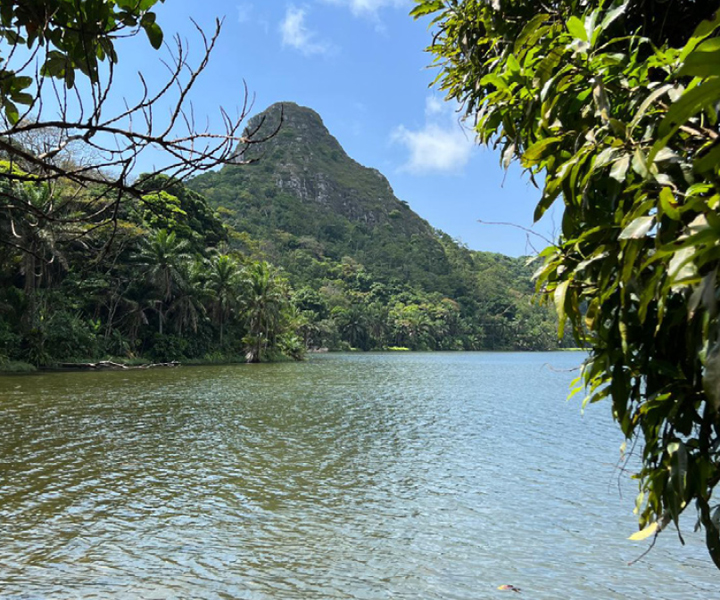
By Philippe Izedian
Philippe is an American who enjoys seeing historical sites, nature, and modern lifestyles on his quest to tackle the TCC list.
The small, oil-rich country of Equatorial Guinea does not lie at the top of most people’s “must travel” lists. However, given it is home to two TCC territories, this Central African nation is not to be overlooked. Landing in Malabo is a unique experience for the region: the roads are immaculate and peaceful. Even the heart of the capital is tranquil besides weddings and the occasional diplomatic motorcade.
The nation is also unique, as one of the few countries where the capital city is not located on the mainland. After visiting the capital island of Bioko, a short flight to Rio Muni takes you into the Central African jungle. Here, oceanfront and inland cities mix Central African charm with modern buildings.
Getting There
Most international flights to Equatorial Guinea are routed through Malabo Airport. Lufthansa and Air France connect Malabo with Frankfurt and Paris, respectively, while Ethiopian Airlines and Royal Air Maroc fly to Addis Ababa and Casablanca.
Visa
Most nationalities require a visa. This has historically been one of the most difficult visas to obtain. However, in 2023, the country’s new e-visa scheme was launched. This allows travelers to apply and often receive their visas within hours. The e-visa is valid only for entries to Malabo International Airport.
Money
Equatorial Guinea uses the Central African Franc (CFA). Large hotels and some restaurants in Malabo except Visa and Mastercard. However, outside the city, cash is a must.
When to Go
Due to its location, Equatorial Guinea’s temperature is fairly stable through out the year. The driest months are December through February.
WiFi and Cell Service
Cell phone data is notoriously slow and expensive in Equatorial Guinea. It’s possible to purchase a local SIM card through the Getesa office in Malabo, but activation times can be long. Some restaurants like Café Malabo offer Wi-Fi to customers, as do most hotels.

Bioko Island
Malabo downtown is not particularly large, but St. Elizabeth’s Cathedral is a nice church worth visiting and there is a fair variety of restaurants. Be careful when taking photos. If any government buildings or workers are in your photos, including the one next to St. Elizabeth’s Cathedral, the police may force you to delete your photos.
Please note that a permit is required to visit both the Ureka Waterfalls and Pico Basilé, Pico Basilé is the highest point on the island. I contacted a tour guide named Agustin, who was able to arrange this permit. His information is shared in the Helpful Links below.
Ureka is located at the southernmost point of Bioko Island and the drive there has a nice view of the coast and forest. Ureka consists of a series of waterfalls mainly located along the beach. The walk along the beach is quite long and part of it goes into the forest. Bring proper shoes and water and go early in the day before the tide comes in too much. Otherwise, you will need to swim part of the way back. Due to the fog, I did not go up to Pico Basilé, but it can be easily combined with Ureka on a day trip.

Mainland
Bata is the major city on the mainland of Equatorial Guinea, and multiple flights from Malabo are scheduled daily with CEIBA Intercontinental and Cronos Airlines. Bata hosts a traditional market and is a good jump-off point for day trips to towns such as Cabo San Juan or the Monte Alén National Park.
An approximate two-hour drive from Bata is Equatorial Guinea’s new capital city, Ciudad de la Paz (City of the Peace) which is still under construction. A few times a week, there are flights to the nearby city of Mengomeyén from Malabo. This city boasts the impressive Grand Hotel Djibloho. Visitors can see the new buildings going up, including a presidential palace. The hotel can also arrange a visit to a nearby village. About one hour away, near the Gabonese border, is the town of Mongomo. There are multiple hotel options and other developments here as it is the birthplace of the country’s president. The Roman Catholic Basilica here is one of the largest churches in Africa.

Other Islands
In addition to Bioko Island, Equatorial Guinea has three other main islands. The Elobey Islands and Corisco Island are located south of the Equatorial Guinean mainland. These islands can be accessed by boat from the mainland. Corisco Island also has an airport but doesn’t receive regular commercial flights.
The furthest island from the rest of Equatorial Guinea is Annobón. Until recently, Annobón could be reached by flight from Malabo. However, now the island is only accessible by cargo ships from Malabo or charter flights. The main site of Annobón is Lake Mazafin, which is accessible by hike from the island’s capital of San Antonio de Palé. Just outside the town center, there is also a pleasant beach.
Helpful Links
- Equatorial Guinea Evisa »
- Agustin (tour guide): +240-222-667-764
- Grand Hotel Djibloho »



